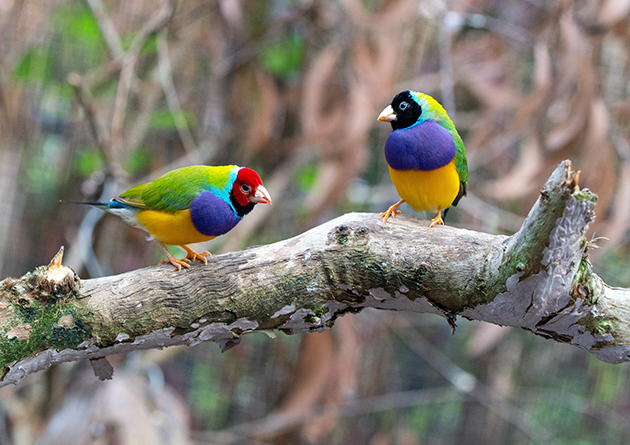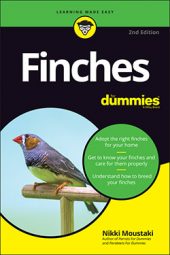
Sprouting seeds for finches
Sprouted seeds, a nutritious treat for finches, are particularly good during molting and breeding phases and for fledglings just learning to eat. Sprouted seeds have far more vitamins and minerals than those served dry. You can purchase a seed sprouter, make one yourself, or sprout seeds on a damp paper towel. Simple directions can be easily found online. Rinse the seed daily to make sure it doesn’t grow mold or bacteria. Feed the seeds to your finches just after sprouting when they reach one-quarter of an inch high, rather than allowing them to grow too much.
A good test to see if the seeds you are purchasing are fresh is to sprout them. If they sprout, you have a fresh bag. If they don’t, take the bag back to the store to exchange it. Mold and bacteria are very harmful for your finches, so don’t take any chances feeding even slightly old sprouts. Even the sprouted seeds and beans from the supermarket last only a few days. If you notice a funky odor or if the sprouts become slimy, toss them. You can use a few drops of grapefruit seed extract in the water you use to sprout the seeds to keep them fresher for longer.
Bathing finches
Healthy finches love to bathe. In warm weather, your finches may bathe every day. Your finches will get soaked, dunking their breasts and faces in the water and fluffing the water up over their backs. Provide your finches with a shallow dish of lukewarm water as a birdbath at least twice a week, more in warmer weather. Water should be around half an inch in depth.
A clean terracotta plant saucer (used to catch excess water when you water your plants) makes a great, inexpensive bird bath. The material is textured and easy for your finches to grip. If your finches seem wary of the bird bath you are offering, dry it and place your finches’ favorite foods into it. After they get used to eating from this dish, you can again try it filled with water.
If your finches like to bathe in their water dish, make sure to change the water frequently. Finches also like to bathe in wet greens, such as kale or watercress, placed in a dish at the bottom of the cage. Never attempt to dry your finches, especially with a blow dryer. Allow them to dry naturally away from any drafts.
You can also use a fine mister to mist water over your birds. Do not spray it directly at them. Instead, spray above the cage and allow it to fall on them like rain would. Be careful not to wet their dry food and change the paper or litter more often if you use a mister to avoid mold growth.
If your finches won’t bathe, the issue might be that they don’t feel safe. Is there a housecat or dog nearby? Are they near a window and can see hawks flying by? Make sure there isn’t anything near their area that might scare them.
Assembling a first-aid kit for finches
You may be in the position to treat a very minor injury yourself or at least get it under control before you take your bird to an avian veterinarian.
Even though you’ll be well equipped with your first-aid kit, it can’t take the place of care by your avian vet.
Your birdy first-aid kit should include:
- Alcohol (for cleaning your tools)
- Antibiotic ointment (a non-greasy kind, for dressing small wounds)
- Baby bird formula (for feeding babies or weak adults)
- Bandages and gauze (for dressing small wounds)
- Bird-safe styptic powder (to stop bleeding)
- Bottled water (for cleaning eyes or wounds)
- Cotton balls (for cleaning small wounds)
- Dishwashing detergent (mild, for cleaning tools)
- Eyedropper (for feeding weak birds)
- Eye wash (for rinsing eyes)
- Heating pad (for hospital cage)
- Hydrogen peroxide (for cleaning small wounds)
- Nail clippers (for clipping nails)
- Nail file (for filing nails)
- Pedialyte (to give to weak adult birds)
- Penlight (to see better)
- Q-Tips (for cleaning small wounds)
- Saline solution (for rinsing small wounds or eyes)
- Sanitizing wipes (for your hands)
- Spray bottle (for spraying solutions onto wounds or eyes)
- Syringe (without needle, for feeding weak birds)
- Towels (small, to hold bird)
- Transport cage (to go to the avian veterinarian)
- Tweezers (for whatever comes up)
- Veterinarian’s phone number (so you can call in an emergency)
Never give your birds any over-the-counter medication meant for humans or other animals. Instead of trying to help the bird yourself, take it to an avian veterinarian immediately.

